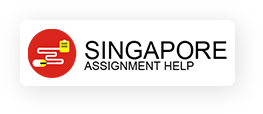| University | National University of Singapore (NUS) |
| Subject | Business Ethics |
Structure
1. Identify the Case and Ethical Problem (Approx. 100–150 words)
- Summarise the key facts of the situation.
- Identify the ethical issue(s) at stake
- Briefly state why these issues raise ethical concerns.
What we expect: A focused summary that leads logically to your ethical inquiry. Don’t just describe what happened — start to frame why it’s ethically significant.
2. Outline Ethical Theories or Human Rights Framework (Approx. 150–200 words)
- Explain the Navigation Wheel model, including its six dimensions:
- Law
- Identity
- Morality
- Reputation
- Economy
- Ethics
- Outline how you will apply at least some or all of these dimensions to your case study. You may also link the Wheel’s dimensions to ethical theories (e.g. morality → deontology; economy → utilitarianism), or bring in human rights perspectives where relevant.
- Highlight any dimensions that seem especially relevant to your case.
What we expect: A clear understanding of how the model helps structure your ethical analysis. You don’t need to apply all six dimensions in the plan — just show how you’ll use them to shape your reasoning in the case study.
Hire a Professional Essay & Assignment Writer for completing your Academic Assessments
Native Singapore Writers Team
- 100% Plagiarism-Free Essay
- Highest Satisfaction Rate
- Free Revision
- On-Time Delivery
3. Preliminary Ethical Argument (Approx. 100–150 words)
- Take an initial position on whether the company’s actions are ethically defensible.
- You may wish to indicate which Navigation Wheel dimensions are most likely to guide your
ethical position. eg the conduct may be legally permissible but ethically damaging.
- Support this with reference to the theories you’ve chosen.
- You don’t need to provide final recommendations — just your likely direction of argument.
What we expect: A thoughtful stance that engages with ethical complexity, not just “they did the wrong thing.” You can qualify your view if needed.
4. Research Strategy (Approx. 150–200 words)
Explain how you plan to gather information for your final memo:
- Identify the types of sources you will use:
o Academic journal articles (e.g. on business ethics, consumer ethics, human rights and business First Nations issues)
o Textbook chapters (e.g. the ethical decision-making model, ethical theories)
o Company information (e.g. websites, annual reports)
o Legal materials (e.g. legislation, regulatory findings, case law)
- Be specific about your search tools (Google Scholar, AustLII, LibrarySearch).
- Highlight the importance of using primary sources over media reports.
What we expect: Evidence that you’re preparing to research deeply and responsibly. Avoid over reliance on general websites or news articles. Use APA in-text citations and a reference list.
5. Professional Tone and Persuasive Reasoning (Approx. 50–100 words)
- Explain how your final case study will adopt a professional and respectful tone appropriate for writing to a company’s senior management.
- Note how you will ensure your argument is persuasive — using logic, ethical reasoning, and respectful language (not emotive or casual terms like “ripping off”).
What we expect: Awareness of your audience and the need to persuade, not attack. Show maturity in tone and approach.
Buy Custom Answer of This Assessment & Raise Your Grades
CASE STUDY – Summary
Urban Rampage/Coral Coast Distributors
This is an organisation that operates retail outlets in remote towns/communities in Western Australia and the Northern Territory. In some of the communities they operate in, they are the only store to sell products such as clothing and homewares. Their practices have come to the attention of Consumer Protection at the Department of Energy, Mines, Industry, Regulation and Safety (DEMIRS). The practices that are of concern include:
- Retailers buy products from other stores such as Kmart and Ali Express and then resell them in their stores at significantly inflated prices. For example, DEMIRS has received a complaint about children’s tracksuit pants that cost $4.50 at Kmart and are being sold for $20 at one of the stores, or a hoodie selling for $10 at Kmart is selling for $55 at the store. A portable pool, selling at Kmart for $8 on special and $29 at full price, was being sold for $129.
- High-pressure sales tactics.
- Apart from consumers being required to pay highly inflated prices, because they are being encouraged to put their purchases on Centrepay/Basics Card1, there are often insufficient funds left to pay for rent, food, and utilities.
Stuck with a lot of homework assignments and feeling stressed ? Take professional academic assistance & Get 100% Plagiarism free papers
Get the best business assignment help services from the academic experts of Singapore AssignmentHelp and score high grades. Our team of academic writers online offers great support, such as essay help, thesis help online, report writing help, etc.
Looking for Plagiarism free Answers for your college/ university Assignments.
- Service Operations Management (SOM) – Individual Assignment October Semester, Academic Year 2025/2026 – Ngee Ann Polytechnic
- Corporate Criminality and Tax Evasion Assessment Essay Brief – Kaplan University
- CH3121 Chemical, Biological & Plant Safety Individual Continuous Assessment 2 2025
- ISIT312 Big Data Management Assignment 2 SIM S4 2025
- BC2402 Designing and Developing Databases Group Project Semester 1 2025/26
- BSE258 Teaching Physical Education and Sports End-of-Course Assessment – July Semester 2025
- BME355 Genomic Sequence Analysis End-of-Course Assessment – July Semester 2025
- QSM202 Construction Measurement (2 of 4) Architectural and M&E Works End-of-Course Assessment – July Semester 2025
- ELT201 Understanding Poetry End-of-Course Assessment – July Semester 2025
- NIE352 Interdisciplinary Problem-Solving for Impact Tutor-Marked Assignment 1 July 2025

